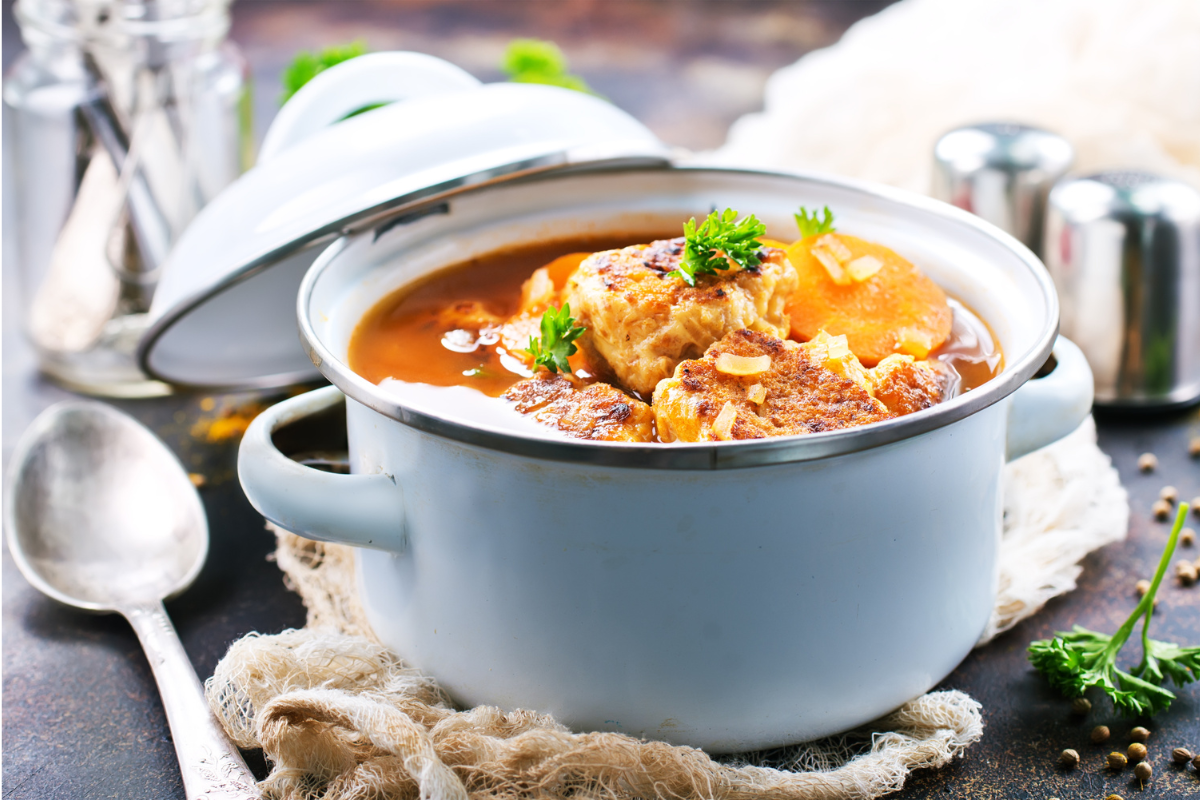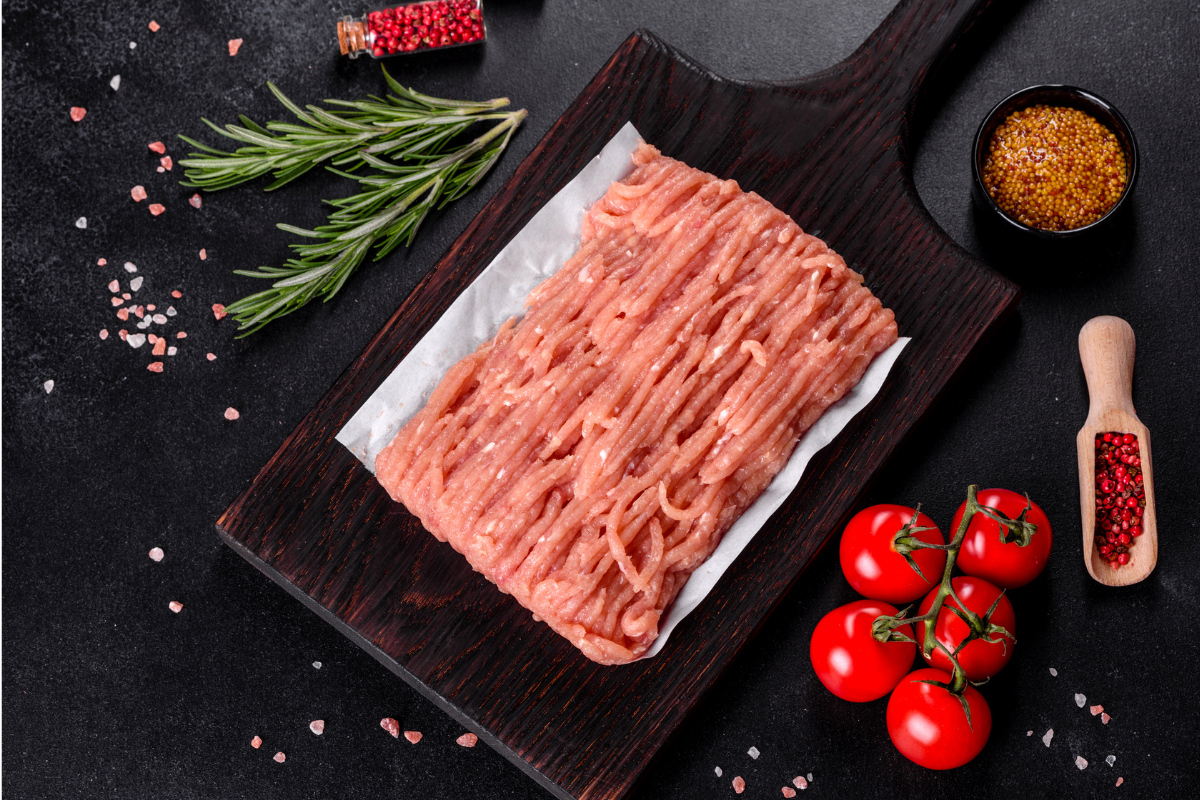Exploring the Health Benefits of Chicken Mince: A Comprehensive Guide
Chicken mince, often a less celebrated variant of ground meat, emerges as a nutritious powerhouse when scrutinized for its health benefits. This article embarks on a detailed exploration of chicken mince, unraveling its nutritional profile, health benefits, culinary versatility, and much more. Whether you’re a fitness enthusiast, a health-conscious individual, or simply someone looking to diversify your dietary choices, understanding the value of chicken mince can significantly enrich your dietary regimen.
Introduction to Chicken Mince
Unlocking Chicken Mince’s Potential
Chicken mince, also known as ground chicken, is gaining popularity in health-conscious kitchens worldwide. This versatile ingredient is made by finely grinding chicken meat, offering a protein-rich, lower-fat alternative sourced from lean cuts like the breast. Its nutritional profile boasts high protein and low saturated fats, making it ideal for maintaining a healthy weight and building muscle. In the kitchen, chicken mince shines with its adaptability, seamlessly absorbing flavors and enhancing a variety of dishes, from Italian meatballs to Asian stir-fries. Beyond its culinary versatility, chicken mince supports sustainability, with responsibly raised chicken having a lower environmental impact than beef or pork. Explore the benefits of chicken mince to elevate your meals while supporting your health and environmental goals.

Nutritional Profile of Chicken Mince
The nutritional profile of chicken mince is a key factor in its growing popularity among health-conscious individuals. This lean meat is particularly high in protein, which is vital for muscle repair, growth, and overall bodily functions. Protein also plays a crucial role in weight management by promoting satiety and supporting metabolism. A typical serving of chicken mince can provide about 20-25 grams of protein, depending on the cut and preparation.
In terms of fat content, chicken mince made from breast meat is especially low in fats, containing just a few grams per serving. Even when sourced from darker cuts like the thigh, it remains significantly leaner than most red meats, offering a healthier profile with less saturated fat and cholesterol. This makes chicken mince an excellent choice for heart health and for those monitoring their lipid intake.
Beyond macronutrients, chicken mince is a good source of various vitamins and minerals essential for health. It contains B vitamins like niacin (B3) and pyridoxine (B6), which are crucial for energy production and neurological health. It’s also a source of trace minerals such as zinc and selenium, important for immune function and antioxidant protection.
Understanding these nutritional aspects helps underscore why chicken mince is not just a versatile culinary ingredient but also a beneficial one for maintaining a balanced and nutritious diet. Whether you’re aiming to build muscle, lose weight, or simply eat healthier, incorporating chicken mince into your meals can be a strategic and tasty way to achieve your dietary goals.
Benefits of Incorporating Chicken Mince into Your Diet
Incorporating chicken mince into your diet brings a multitude of health benefits that align with various lifestyle and dietary goals. One of the primary advantages is its role in weight management. Due to its high protein and low-fat content, especially when sourced from chicken breast, chicken mince can help you feel fuller for longer periods. This satiety can reduce overall calorie intake, which is crucial for weight loss or maintenance.
Moreover, the high-quality protein found in chicken mince is essential for muscle growth and repair. This makes it an ideal food choice for athletes, bodybuilders, or anyone looking to increase their muscle mass or enhance recovery after workouts. Protein’s role in muscle health is not only vital for athletes but also for aging individuals looking to maintain muscle strength and functional ability.
Chicken mince also offers broader health benefits. Its low saturated fat and cholesterol levels contribute to better heart health, reducing the risk of heart disease when consumed as part of a balanced diet. Additionally, the presence of essential nutrients like B vitamins supports energy metabolism and neurological health, while minerals like zinc and selenium boost the immune system.
Choosing chicken mince over higher-fat meats can lead to improved health outcomes and support a lifestyle focused on wellness and vitality. Whether you’re aiming to lose weight, build muscle, or simply maintain a balanced diet, chicken mince is a versatile and nutritious option that can help you achieve your health objectives.
Comparing Chicken Mince to Other Meats
Nutritional Differences
When comparing chicken mince to other popular ground meats like beef, pork, or turkey, several key nutritional differences become apparent, each with its own set of health implications. Chicken mince, particularly when made from the breast, is renowned for its low fat and high protein content, making it an excellent choice for those looking to reduce their intake of saturated fats without compromising on protein.
Health Implications
Beef mince, while rich in protein and iron, typically contains a higher level of saturated fats, which can contribute to increased cholesterol levels and a higher risk of heart disease if consumed in excess. Pork mince also tends to have higher fat content, especially depending on the cut used, which can have similar health implications as beef.
Comparison with Turkey Mince
On the other hand, turkey mince is often compared closely with chicken mince due to their similar nutritional profiles. Both are excellent low-fat, high-protein options, though the specific nutrient content can vary slightly based on whether they’re made from dark or white meat. Turkey mince, like chicken, offers a healthier alternative to red meats but with a different flavor profile and texture.

Health Benefits of Choosing Chicken Mince
Choosing chicken mince over beef or pork can significantly reduce your intake of saturated fats and cholesterol, contributing to better cardiovascular health. Additionally, for those managing their weight or looking to build muscle, the high protein and low-fat composition of chicken mince supports these goals effectively. While turkey mince presents a comparable alternative, chicken mince remains a favorite for its versatility, taste, and the wide availability of recipes and culinary applications.
Conclusion
In summary, chicken mince stands out as a superior choice for health-conscious individuals due to its favorable nutritional profile. By opting for chicken mince, you can enjoy a variety of delicious and nutritious meals that support a healthy lifestyle, whether your goal is weight management, muscle growth, or overall well-being.
Creative Ways to Cook with Chicken Mince
Chicken mince is a culinary chameleon, capable of transforming into a myriad of dishes that can suit any palate or occasion. Its versatility allows it to be the star of the show in a range of recipes, from traditional comfort foods to exotic global cuisines. Here are some creative and healthy ways to elevate your cooking with chicken mince:
Spicy Chicken Meatballs: Infuse your chicken mince with herbs, spices, and a kick of chili to create mouthwatering meatballs. Bake them for a healthier option and serve with a spicy tomato sauce or a cooling yogurt dip. They’re perfect for appetizers, sandwiches, or as a protein-packed addition to pasta.
Chicken Lettuce Wraps: For a light and refreshing meal, cook seasoned chicken mince with vegetables like bell peppers, water chestnuts, and onions. Serve the mixture in crisp lettuce leaves for a healthy, low-carb option that doesn’t skimp on flavor.
Chicken Mince Tacos: Swap out traditional beef or pork with chicken mince for your next taco night. Season the mince with a blend of Mexican spices, then serve in warm tortillas with your favorite toppings like salsa, guacamole, and shredded cheese.
Addressing Common Myths About Chicken Mince
Chicken mince, a versatile and nutritious option in many diets, is often misunderstood, leading to several myths about its health implications. By addressing these misconceptions, we can appreciate the true benefits of incorporating chicken mince into our meals.
Chicken Mince is Less Nutritious Than Whole Chicken
A common misconception is that chicken mince is nutritionally inferior to whole chicken cuts. In reality, chicken mince can be just as nutritious, depending on the parts of the chicken used. Mince made from breast meat is lean and high in protein, while mince from darker cuts contains more fat but also more iron and vitamins. The nutritional content is comparable; it’s the form that differs.
Chicken Mince is Always High in Fat
Many people assume that all mince is high in fat, but chicken mince, especially when made from the breast, is one of the leanest options available. The fat content in chicken mince is significantly lower than in many red meat alternatives, making it a healthier choice for those monitoring their fat intake.
Cooking with Chicken Mince is Limiting
Another myth is that chicken mince is not as versatile as other meats. However, chicken mince can be used in a myriad of recipes from various cuisines. It’s perfect for burgers, meatballs, tacos, and more, proving its versatility in the kitchen.
Chicken Mince Loses Its Nutrients When Cooked
Some believe that cooking chicken mince leads to a significant loss of nutrients. While some vitamins may diminish slightly during cooking, chicken mince remains a rich source of protein and other nutrients. Cooking it can also enhance nutrient absorption, making it even more beneficial.
All Chicken Mince is Processed and Unhealthy
There’s a misconception that chicken mince is heavily processed. While some processed forms exist, pure chicken mince without additives is simply ground chicken. It’s a wholesome, minimally processed food, especially when you choose organic or natural ground chicken without added preservatives or flavors.
By debunking these myths, we can better understand and appreciate the nutritional value and versatility of chicken mince, making it a standout choice for healthy, flavorful cooking.
How to Choose and Store Chicken Mince
Choosing High-Quality Chicken Mince:
Check the Label:
Ensure the chicken mince is lean, especially if it’s made from breast meat, for lower fat content. Look for packaging indicating freshness dates and, if possible, the source of the chicken.
Consider Appearance:
Fresh chicken mince should have a pinkish hue and should not show a grey color or emit a sour smell. Any discoloration or unpleasant odors indicate the mince isn’t fresh.
Consider the Source:
Opt for chicken mince sourced from organic or free-range chickens whenever feasible. These options likely had a better diet and living conditions, potentially affecting the meat’s nutritional quality.
Ground On-Site: Some stores offer chicken mince ground on-site, which is often fresher than pre-packaged options. This freshly ground mince may be a healthier choice if you can verify the quality of the chicken cuts used.
Safely Storing Chicken Mince:
Refrigeration:
Store chicken mince in the refrigerator if you plan to use it within one to two days, keeping it at or below 40°F (4°C) to prevent bacterial growth.
Freezing:
Freeze chicken mince for longer storage, up to four months without significant quality loss. Use airtight packaging to prevent freezer burn and preserve flavor.
Preventing Cross-Contamination:
Store chicken mince separately from other foods in the refrigerator or freezer to prevent cross-contamination. Use separate utensils and cutting boards when handling chicken mince.
Thawing:
Thaw frozen chicken mince in the refrigerator, not at room temperature. Plan to allow sufficient time for safe thawing.
Cooking After Thawing:
Once thawed, promptly cook the chicken mince and avoid refreezing it. Ensure it reaches the right temperature (165°F or 74°C) during cooking to eliminate any harmful bacteria.
By selecting high-quality chicken mince and following proper storage and handling practices, you can enjoy the health benefits and delicious flavors of this versatile ingredient while minimizing any food safety risks.

FAQ Section: Frequently Asked Questions About Chicken Mince
Is chicken mince healthier than beef mince?
Both chicken mince and beef mince offer different nutritional profiles. Chicken mince is typically lower in fat and calories compared to beef mince, making it a healthier option for those watching their fat intake. However, the choice between the two depends on individual dietary preferences and nutritional needs.
Can chicken mince help with weight loss?
Chicken mince is often recommended for weight loss due to its lower fat content and high protein content. Including chicken mince in a balanced diet, along with regular exercise, can contribute to weight loss and muscle maintenance.
What are the best ways to cook chicken mince to retain its nutrients?
To retain the nutrients in chicken mince, avoid overcooking it. Opt for cooking methods such as baking, grilling, or stir-frying, and avoid frying in excessive oil. Additionally, incorporating fresh vegetables and herbs can enhance the nutritional value of the dish.
How often should I include chicken mince in my diet?
The frequency of consuming chicken mince depends on individual dietary preferences and nutritional needs. It can be included in meals several times a week as part of a balanced diet that includes a variety of protein sources.
Can chicken mince be a good protein source for children?
Chicken mince can be a nutritious protein source for children, as it is typically lower in fat and calories compared to other meats. However, it’s essential to ensure that the chicken is cooked thoroughly to minimize the risk of foodborne illness.
Are there any risks associated with consuming chicken mince?
Like any raw meat product, chicken mince carries a risk of foodborne illness if not handled and cooked properly. It’s important to store, handle, and cook chicken mince safely to reduce the risk of contamination and ensure food safety.
In conclusion, chicken mince is a nutritious, versatile, and delicious option for those looking to maintain a healthy diet. By understanding its benefits and incorporating it into your meals, you can enjoy a variety of tasty dishes while nourishing your body with essential nutrients.
